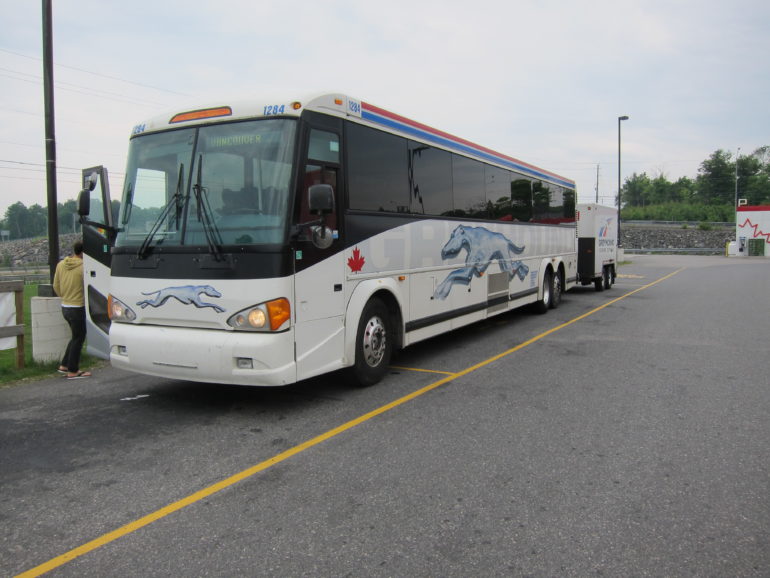
Greyhound Canada announced it will be cutting services in Canada’s Western provinces. (Wikimedia Commons – Greyhound Bus)
Lindsay Charlton
Greyhound Canada announced on July 9 it will be cutting all of its routes in the Western provinces, primarily affecting smaller rural communities that rely on the busses to get to major cities.
“This decision is regretful and we sympathize with the fact that many small towns are going to lose service,” Greyhound Canada senior vice-president Stuart Kendrick said in an interview with The Canadian Press.
He cites a lack of usage as the primary reason for the cuts.
The only route remaining in the Western provinces as of October will be the Vancouver-Seattle bus which is run by Greyhound’s American counterpart.
In addition to the sweeping cuts across Western Canada, Greyhound will be halting services in Ontario north of Sudbury. The rest of Ontario and all of Quebec are expected to continue regular service.
“The issue that we have seen is the routes in rural parts of Canada, specifically Western Canada, are just not sustainable anymore,” Kendrick said.
Mayor Manfred Bauer of Keremeos, a small village in the Similkameen Valley area of British Columbia about 350 km east of Vancouver, has been aware of the service cancellation in his community since last September.
He said he told B.C. Transport Minister Claire Trevena that the about 10,000 people in Similkameen will have no mass transit on Highway 3, the link to Vancouver, since June.
Since Greyhound quit service in the area, residents have had to take various busses and transit to go through different communities to make their way to Vancouver, turning what would ordinarily be a five-hour trip into a full-day excursion, Bauer said.
But the alternate routes were serviced by Greyhound, so that option will no longer be available.
“With Greyhound announcing that they are pulling out of Western Canada completely, we are already trying to put something together that will provide an alternative transportation method,” he said. “But we need the province to give us some rural community transportation funding.”
Since the population in these areas are so low, a small tax contribution makes it difficult to collect the funds necessary to put together a privatized public transportation option without some major provincial subsidies, Bauer said.
“The Similkimean is, let’s say, 106 km long and there’s only 10,000 people living here,” he said. “Ninety per cent of land here is ranching and agriculture.”
Bauer cited the province’s contribution to rural schools with the Rural School Enhancement Fund, where the province provides more subsidies to schools in rural areas instead of the usual 50-50 cut that areas with greater population receive.
“Ideally they should provide a rural transportation fund so it is outside the usual 50-50, so we can make sure that rural communities remain sustainable as we experience more and more people moving in as they retire from the cities,” he said.
Many raised concerns over the most vulnerable communities that these service interruptions will affect.
cutting greyhound services in western canada will result in the deaths of more indigenous women who have no other means of transportation. this is something the folks at the national inquiry should be making a statement on.
— Emily Riddle (@emilyjaneriddle) July 9, 2018
My point here is that this is a crisis a long time in the making. And it is one that points to the need for significant intervention and in all liklihood federal intervention. Public transit is vital, especially for women, for Indigenous people, for the North.
— Adele Perry (@AdelePerry) July 10, 2018
Transportation in rural and remote communities is a major barrier to accessing services, many of which are only available in cities, and things are about to get worse. 🙁 https://t.co/FxR2eUTgPy
— MHRN (@mbhrn) July 9, 2018

